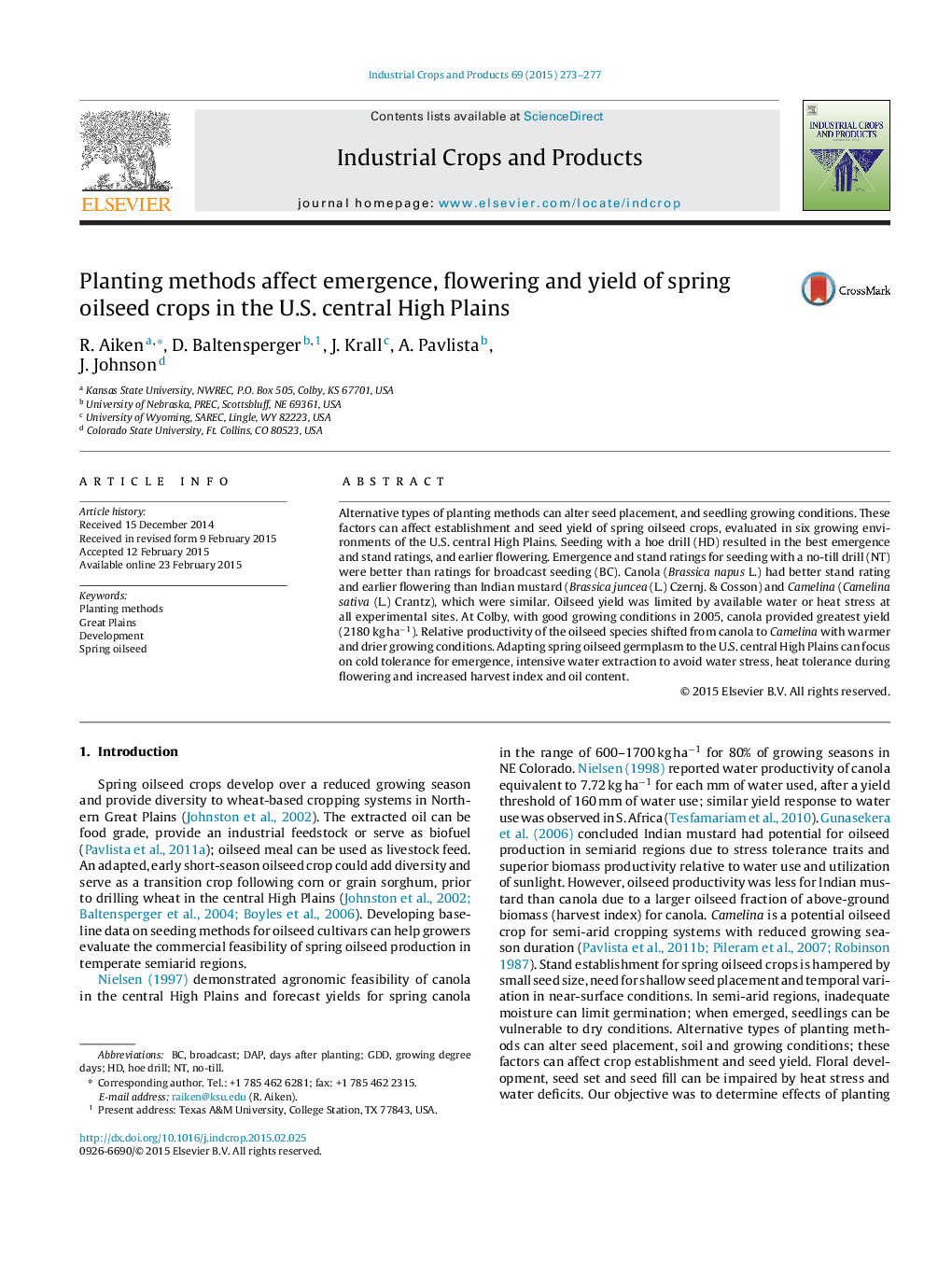| Article ID | Journal | Published Year | Pages | File Type |
|---|---|---|---|---|
| 4512941 | Industrial Crops and Products | 2015 | 5 Pages |
•Seeding with hoe drill improved emergence ratings and accelerated flowering.•Canola had better stands than Indian mustard and Camelina.•Oilseed yields limited by available water or heat stress, best yield 2180 kg ha−1.•Adaptive traits: heat tolerance during flowering, increased harvest index and oil %.
Alternative types of planting methods can alter seed placement, and seedling growing conditions. These factors can affect establishment and seed yield of spring oilseed crops, evaluated in six growing environments of the U.S. central High Plains. Seeding with a hoe drill (HD) resulted in the best emergence and stand ratings, and earlier flowering. Emergence and stand ratings for seeding with a no-till drill (NT) were better than ratings for broadcast seeding (BC). Canola (Brassica napus L.) had better stand rating and earlier flowering than Indian mustard (Brassica juncea (L.) Czernj. & Cosson) and Camelina (Camelina sativa (L.) Crantz), which were similar. Oilseed yield was limited by available water or heat stress at all experimental sites. At Colby, with good growing conditions in 2005, canola provided greatest yield (2180 kg ha−1). Relative productivity of the oilseed species shifted from canola to Camelina with warmer and drier growing conditions. Adapting spring oilseed germplasm to the U.S. central High Plains can focus on cold tolerance for emergence, intensive water extraction to avoid water stress, heat tolerance during flowering and increased harvest index and oil content.
